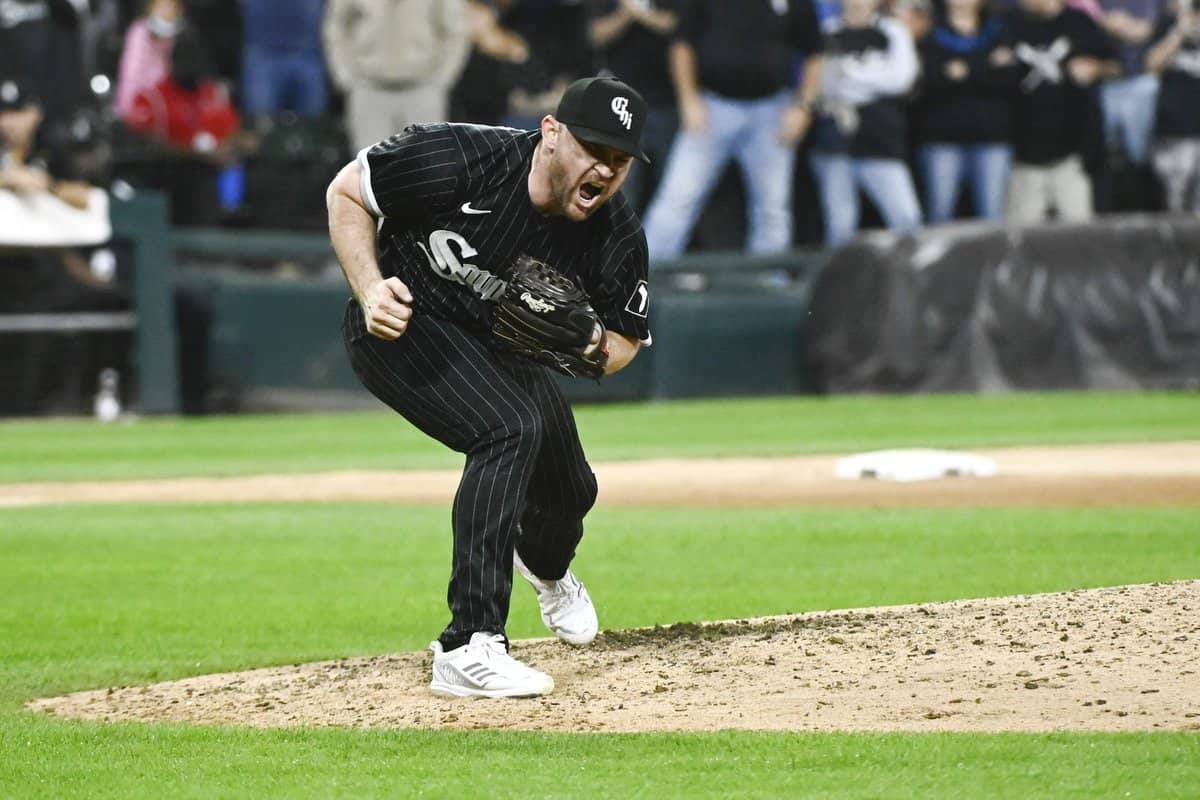Ideally, Liam Hendriks would be returning to a White Sox team that was treading water at the very least, with some established bullpen hierarchy that would allow him to slide into low-pressure situations as he reacquainted himself with game speed.
The White Sox instead tipped the return of Hendriks shortly after Joe Kelly blew a save in the ninth inning of a loss that would be considered disappointing if anybody following the 2023 White Sox had the capacity to expect anything more.
The White Sox reinstated Hendriks from the injured list this afternoon, replacing Jimmy Lambert on the 26-man roster. Lambert headed to the injured list himself retroactive to May 28 with right ankle inflammation.
Hendriks' return from Stage 4 cancer completes an arduous but ultimately uplifting saga, and so many wonderful things have been written about him, including two more articles from the last couple of days. Multiple beat writers from The Athletic collected stories from Hendriks' teammates over the years, while Jeff Passan presented a comprehensive start-to-finish account for ESPN, including some real human details about the emotions surrounding the diagnosis process.
So Hendriks went in for the PET scan, the one that made him look like Olive the dalmatian, and Rosenthal at first shattered the Hendrikses' illusions when she said Stage 4. It was not, she made sure to say, necessarily terminal like other Stage 4 cancers; Stage 4 non-Hodgkin lymphoma simply means the cancer cells have spread beyond the lymph nodes and to other areas -- in Hendriks' case, his bones. This was serious, yes, but as the tears again welled in Kristi's eyes and Hendriks tried to maintain his steely resolve, Rosenthal uttered 10 words that brought them a semblance of calm in a sea of concern.
"I've been worried before," she said, "but I'm not worried with you."
There was a path to remission. It would involve grueling eight hours-long intravenous immunotherapy sessions that target B cells -- a white blood cell that makes antibodies to keep the immune system afloat -- infected by cancer. The normal immunotherapy-chemotherapy treatment for Stage 4 non-Hodgkin lymphoma is six courses, each two days in a row followed by a 28-day break. Hendriks nodded along at everything but the six treatments. Might four be enough to cure him? He wanted to return to the White Sox as soon as possible, and six months of infusions would keep him out until at least August. Rosenthal was open to the possibility.
But while Hendriks is the season's best story, the rest of the White Sox provided no real competition for that title. It's like saying Lucas Giolito is the best White Sox starter, or Winston-Salem the farm system's most interesting affiliate. These things were never supposed to sound like faint praise.
Up until today, Hendriks' personal journey ran parallel to the White Sox's season, and the lack of intersection isolated him from the disenchantment everywhere else. Now the streams will cross, and it could get complicated if Hendriks' stuff is still short of where it was last season. Hendriks says he doesn't want to take it easy on himself, but it seems unreasonable for everybody who isn't Hendriks to maintain the usual expectations.
Look at Garrett Crochet, who recently returned from more routine type of baseball absence (Tommy John surgery), and doesn't yet resemble his usual form. He started off with a seven-pitch 1-2-3 inning, but he's walked nine batters over 4⅓ innings since. Command is always the last thing to return from Tommy John surgery, and so we can table the idea that he's going to meaningfully boost the relief efforts from the left side for the time being. Crochet may have standards he's not meeting, but recovery from such invasive procedures requires reasonable revisions from everybody else.
Apply that to Hendriks and then some, because it's hard to think of anything more invasive than an illness that permeates bone.
Pedro Grifol's job might get tougher before it gets easier, because two of his eight relievers require extra management of expectations, and constant evaluation of progress, or lack thereof. And while bullpens always have one or two positions that are subject to careful handling and/or constant turnover, the rest of the White Sox team generates so few easy, low-leverage situations that a reliever can't be hidden for long, especially if he has any chance at being a bigger help.
The best-case scenario is that Hendriks gets an adrenaline boost that helps him get back to high-leverage sooner than later. The silver medal scenario is that Hendriks comfortably slots below Keynan Middleton on the leverage ladder, and the Sox need nothing more.
There are more pessimistic forecasts, but we don't really need to dig into those because they're independent of Hendriks. The worst-case scenario has already been avoided, because Hendriks is back and able to pitch, and it'll be worth re-reading the stories for refreshers of everything he's been through if and when it starts to become mundane.





